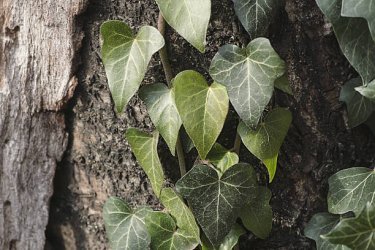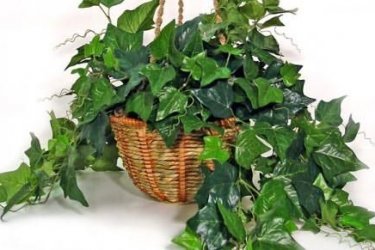Ivy
Ivy is a plant of the Arialiaceae genus, common in the subtropical zones of Africa, Asia, America, and southern Europe.
Its natural habitat is shady forests; with the help of special roots, the vine can cling to a support and climb to a height of about 12-15 m. Through these same roots it receives additional moisture and nutrition.
In countries with mild winters, heders often entangle themselves in the walls of large buildings, clinging to cracks and uneven areas on the walls. They are usually used for vertical gardening in landscape design.
Types of ivy
Botanists count about a hundred forms of common hedera; varieties of vines differ in the shape and color of the leaves, and in size.
The flowers are not particularly decorative; they are collected in zonitic inflorescences, small, and pale in color.
Hedera is used quite often in landscaping a room; it has been proven that it purifies the air better than other plants.
In addition, ivy is known as a medicinal plant, preparations from it:
- have an anti-inflammatory effect;
- act against microbes and fungi;
- help to quickly get rid of cough.
The plant is not particularly capricious, but does not like hot sun and too dry air.
Garden varieties in most cases also grown as indoor plants. For example, frost-resistant garden ivy is grown both outside and in the house; it does not grow quickly, has fairly small leaves and is distinguished by the presence of numerous varieties.
For cultivation in areas with warm winters, Caucasian or Colchis and Crimean ivy is also used.
Unfortunately, with unstable winter weather, growing ivy in open ground is always associated with the threat of the plant freezing.
How to propagate indoor ivy
The best propagation material can be obtained by trimming vines that are too long.
Propagate ivy from apical cuttings It’s easy, you can do this throughout the year. For rooting, cuttings can be placed in a jar of water.
To speed up branching, after planting in the ground, pinch the top of the cutting.
Street ivy can be propagated using the same method; you can also use the method of creating shoots.
Common ivy, what care does it require?
Hedera is not particularly picky about the quality of soil, so it can be planted in pots with other green pets.
To make the vine comfortable, you should wash the leaves more often. Watering in summer should be abundant and frequent, but water should not stagnate in the pots. In winter, watering is limited, the main thing is not to let the earthen coma dry out.
If wintering is organized in a warm room, watering should be frequent. You should also make sure that the air in the warm room is sufficiently humidified.
Although hedera is considered shade-tolerant, variegated forms still require high-quality lighting.
It is recommended to fertilize hedera 2-3 times a month in the summer. In winter, the number of fertilizer applications is reduced to 1 time per month.
Do not allow excess fertilizer - the leaves will turn yellow and crumble.
Hedera is replanted in the spring, young plants - annually. You should not buy a deep pot - the plant's root system is superficial.
To prevent waterlogging of the earthen ball, high-quality drainage is provided in pots.
As for pests, the plant may suffer from an invasion:
- thrips and scale insects;
- red spider mites.
Control insect pests by spraying them with insecticides.



